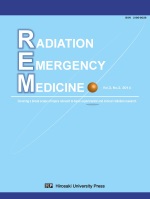Andrzej Wojcik1*, Ainars Bajinskis1, Horst Romm2, Ulrike Oestreicher2,
Hubert Thierens3, Anne Vral3, Kai Rothkamm4, Elisabeth Ainsbury4,
Marc Benderitter5, Philippe Voisin5, Francesco Barquinero5, Paola Fattibene6,
Carita Lindholm7, Lleonard Barrios8, Sylwester Sommer9, Clemens Woda10,
Harry Scherthan11, Christina Beinke11, Francois Trompier12 and Alicja Jaworska13
1Stockholm University, Sweden, 2Bundesamt fuer Strahlenschutz, Germany, 3Ghent University, Belgium,
4Public Health England, United Kingdom, 5Institut de Radioprotection et de Sûreté Nucleaire, France,
6Istituto Superiore di Sanità, Italy, 7Radiation and Nuclear Safety Authority, Finland,
8Universitat Autonoma de Barcelona, Spain, 9Institute of Nuclear Chemistry and Technology, Poland,
10Helmholtz Zentrum Muenchen, Germany, 11Bundeswehr Institute of Radiobiology, Germany,
12EURADOS, Germany, 13Norwegian Radiation Protection Authority, Norway
Radiat Emerg Med (2014) 3 (2): 19-23



